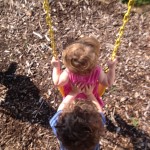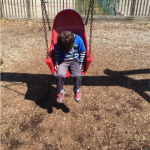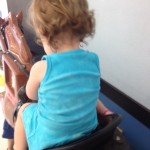Looks Like She’s More of a Firecracker Than a Flower: Appreciating Every Child
We were at a great birthday party yesterday. These people have a beautiful home with a wonderful backyard, holistically suited for play and exploration. They have extensive gardens, one of the coolest tree houses I’ve ever seen, a garage filled with amazing toys, and tons of toddler equipment (like slides and plastic play houses).
I was with the younger two, because my wife and the big guy were at a bouncy house party across town. This summer has been so jam-packed with big kid and toddler birthday celebrations that occasionally we have to split up the team. Our social calendar could be sponsored by Oshkosh B’gosh. Anyway, as we approached the amazing backyard from the driveway, both my three-year-old’s and my one year-old’s eyes lit up! Not unlike many other little kids, these two absolutely love playing…it’s among their favorite things to do!
It was as if the rest of the world disappeared. Nothing existed but the utopic backyard. Cool…they were both off to the races. What followed was a couple of hours of nonstop, back-and-forth daddy-running in an effort to make sure that neither of them ended up with more than scraped knees and minor bruises. There were a few shrieks of pain, a couple of extended hugs (my favorite), some sniffley nose wipes, but all in all we came out relatively unscathed. A good day of enthusiastic exploration and play!
Here’s the thing though, there were a whole bunch of wonderful organized activities going on during the party, none of which seemed interesting enough for either of my two wild-childs (“children” doesn’t work here) to engage in. At first I felt kind of bad as the hosts repeatedly, but to no end, reminded us, “It’s story time,” or, “It’s snack time,” or, “It’s activity time.” I shared multiple slanted smiles, and eventually I explained that these two were not programmed to stand still for more than forty seconds at a time. In no time at all, I stopped feeling bad. Personally, I would have loved to sit for story time! Not them though…they were playing, and they were going to continue playing. Both of my little whippersnappers were completely flushed and dripping with sweat, it was all I could do to get them to stop every once in a while and sip on some water. I just glad they didn’t pass out. We had some wonderfully concentrated rest time when we got home.
And now the punch line. At one point the other kids were dressing up in light, colorful, swaths of fabric and pretending to be flowers. It looked really fun! The facilitator (our local librarian) was playing music from the nutcracker and the kids were gracefully moving around on mats, pretending to grow and bend in the wind. While the lovely cluster of anthropomorphic flowers was floating around on whimsically on the driveway, my daughter was in the garage banging a badminton racket against the wall, stomping her feet, and making grunting noises. It was actually quite rhythmic and impressive. I thought, “Maybe she’ll be a percussionist!” It was more of what seemed like some sort of tribal expression that the delicate ballet happening a few feet away, but I liked it. It was cool. She was thrilled with herself and grinning from ear to ear with a, “look what I can do Daddy,” expression on her face. I clapped and smiled.
One of the nearby mom’s leaned over to another just within earshot, and with what I’m assuming were good intentions (thank you Dr. Covey), she whispered, “Looks like she’s more of a firecracker that a flower.” She couldn’t possibly have known how right she was!
From an educational leadership perspective, it called to mind the importance of recognizing that some kids are flowers, some kids are firecrackers, and most kids exist along a spectrum of all kinds of combinations & in-betweens. I’m so proud of my little firecracker! And by the way, I’ve seen her be a delicate and lovely flower too. I know that her incredible enthusiasm and zest for life is going to propel her to heights beyond any of our wildest imaginations. I appreciate that parent reminding me to always look at every child with wonder, amazement, and pride. Let’s always remember that each child is someone’s firecracker, someone’s flower, or someone’s something else! When children are in our care, it’s supremely important that we recognize, appreciate, support, and encourage them in individualized, compassionate, and comprehensive ways!
Dream Big. Work Hard. Be Well.














